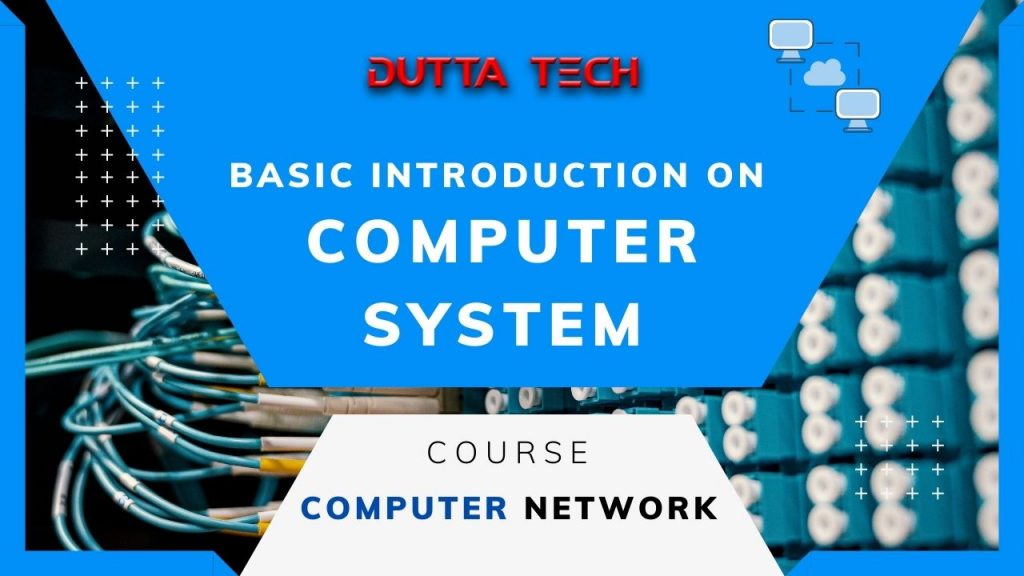Table of Contents
What is a basic introduction to Computer Systems?
Basic Introduction on Computer System is a set of integrated devices that takes input, processes it, and gives output. Also, it stores data and information. The computer system allows users to input, manipulate and store data. Computer systems include a CPU, monitor, keyboard, mouse, and other optional components.
What is Computer System?
A computer system is an electronic device that takes data as an input and processes it under the control of a set of instructions (called program) and then produces a result (output), and all the set is called a computer system.
The Basic Components of a computer system is given below :
1) Input Unit
2) Output Unit
3) CPU (Central Processing Unit)
a) Control Unit ( C U)
b) Arithmetic logic Unit ( A L U)
c) Main Memory unit ( M M U)
4) Storage Unit
a) Primary Storage
b) Secondary Storage
1) Input Unit :
Computers need to receive data and instructions in order to process the command. Therefore we need to input instructions into the computers. The keyboard and mouse are some of the most commonly used input devices.
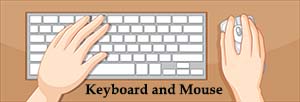
2) Output Unit :
The output unit of a computer receives output from the CPU (Central Processing Unit). Example of Output Unit is Printers, Monitor, etc. Other commonly used output devices are floppy disk drive, hard disk drive, and magnetic tape drive.
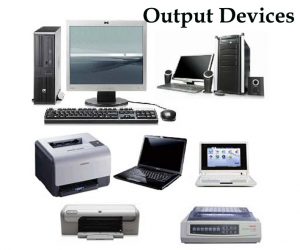
3) CPU (Central Processing Unit) :
This is the main part of a computer system, Is also known as a processor.
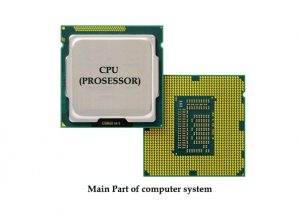
It consists of three units which are as follow
a) Control Unit ( C U)
b) Arithmetic logic Unit ( A L U)
c) Main Memory unit ( M M U)
a) Control Unit ( C U): It controls all other units in the computer. The control unit instructs the input unit, where to store the data after receiving it from the user. A control unit (CU) handles all processor control signals, control unit directs the entire computer system it also communicates with both the arithmetic logic unit (ALU) and main memory. The Control Unit or CU Controls or coordinates all activities performed in a computer system.
b) Arithmetic logic Unit ( A L U): All calculations are performed in the Arithmetic Logic Unit (ALU) of the computer. It also does comparison and takes decisions.
The arithmetic operation comprises of (Addition, subtraction, division, multiplication), and the logical unit carries out the operation such (AND, OR, Equal, less than, greater then).
Data is transferred to ALU from the storage unit when required. Whenever calculations are required, the control unit transfers the data from the storage unit to ALU once the computations are done, the results are transferred to the storage unit by the control unit, and then it is sent to the output unit for displaying results.
c) Main Memory unit ( M M U): The main memory unit is used for storage of the copy of the main software program that controls the general operation of the computer.
and temporary storage of a copy of application program instruction, to be received by CPU for interpretation and processing or execution.
4) Storage Unit :
The storage unit is the unit that gives space to store data or instruction of processed data.
It stores information or instruction
It stores Results
It stores consequences of prepared data
There are mainly two types of storage Unit
a) Primary Storage
b) Secondary Storage
a) Primary Storage: They are also called Main memory or in other words as RAM (Random Access Memory).
The primary Storage cannot store a huge amount of data, and the data stored in this memory is temporary (The data is lost when there is a power failure), it is also called temporary memory, they are very expensive.
The other example of primary Storage is the L1 Cache of Processor, RAM
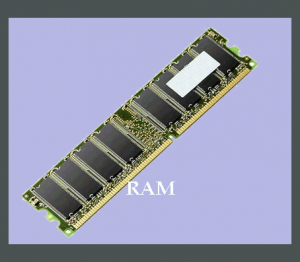
b) Secondary Storage: Secondary storage is also called a permanent storage unit when the data stored in this memory is stored permanently. The data remains in this memory even when there is a power failure or shutdown, they are much cheaper than primary memory.
The Example of Secondary Storage are solid-state drive (SSD), Hard disk drive (HDD), Floppy disk drive, USB drive, CD drive, DVD drive
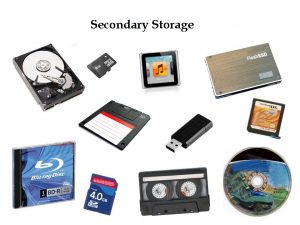
Types of Computers
According to size, operational, and processing power computer is classified into different types.
Computer system types Operational Based
These are three types
i) Analog Computers
ii) Digital Computers
iii) Hybrid Computers
i) Analog Computers:
Analog computers can perform several mathematical operations simultaneously. These are almost extinct now.
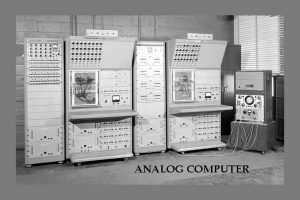
ii) Digital Computers:
These types of computers use 0 and 1 for data processing where 0 is for ON and 1 is OFF, they use digital circuits and are designed to operate. A digital computer is programmable. Digital computers are suitable for complex computation and have higher processing speeds.
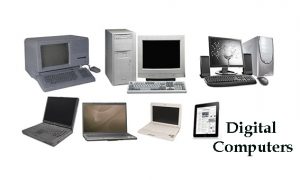
iii) Hybrid Computers:
It is a combination of both digital and analog computers. In this type of computer, the digital segments perform process control by conversion of analog signals to digital ones.
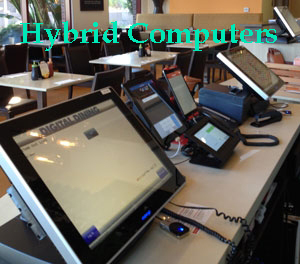
Computer system types according to size and processing power.
The computers are broadly classified into four categories
i) Microcomputers
ii) Minicomputers
iii) Super Mini Computer
iv) Mainframe computers
v) Supercomputer
i) Microcomputers:
This computer uses a microprocessor and its central processing unit. These are smaller in size as compared to mainframe computers. It is also called a personal computer, it uses a keyboard and mouse as input device and monitor or screen as output device also computer memory in the form of RAM and a power supply. These computers can fit on desks or tables
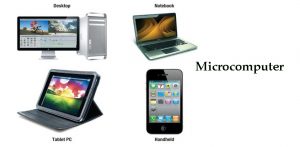
i) Personal computers :
It is small in size, a single-user computer, based on a microprocessor. A personal computer has a keyboard for entering data, a monitor for displaying information, and a storage device for saving data.
Example: desktops, laptops, notebooks, tablets, and Personal Digital Assistants (PDAs).
ii) Minicomputers:
It is a multi-user computer that is capable of supporting from 10 to 100 users simultaneously. In terms of size and processing capacity, minicomputers lie in between mainframes and microcomputers. Its lie in between mainframes and microcomputer in terms of size and processing capacity. It’s also called mid-range systems or workstations.
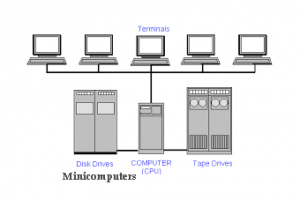
iii) Super Mini Computer
These are 32-bit word length machines and support memory sizes in the range of 1 M byte to 8 M bytes. The CPU speed is nearly 2 million instructions per second. A wide range of fast peripherals is supported by these machines. Its application area is research and development, process control bigger commercial organization.
iv) Mainframe Computers:
It is a powerful multi-user computer that is capable of supporting 100 to 1000 or more users simultaneously. Mainframe computers are used by large organizations for processing bulk data and ERP or highly critical applications.
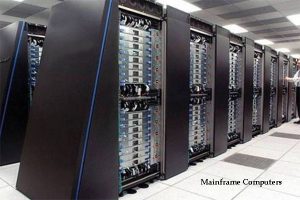
v) Supercomputers:
An extremely fast computer that can perform hundreds of millions of instructions per second, it is basically used by scientists or researchers.
It has parallel processing and a well-designed memory hierarchy and large transaction processing power it’s used for the study of Quantum physics, mechanics, weather forecasting, molecular theory.
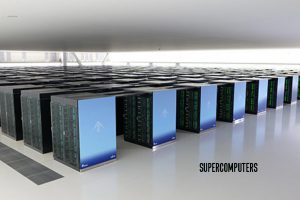
There are five generations of the computer each generation is separated by the technology used by them (hardware and software).

